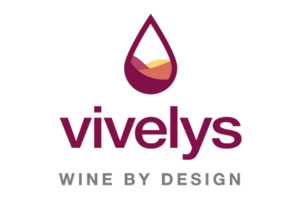By Branden Hamby

Cilyo®, a new technique with several positive impacts including reducing the need of fining agents for must protection and the ability to add stabilized and improved press fractions to blends received one a WINnovation Award for its ingenuity and advancement in winemaking processes.
We interviewed Laurent Fargeton, Product Manager at Vivelys, who helped develop Cilyo, to tell us more about the technology.
First, tell us about Vivelys?
Vivelys is a French company created more than 20 years ago (previously known as OENODEV). 70% of our turnover is made abroad, 25% of which in the USA.
Vivelys and its 5 subsidiaries – USA, Chile, Argentina, Australia, Bulgaria – support winemakers all around the world helping them to create specific wine profiles.
To achieve that objective, we built our knowledge with the help of internal experimental programs – more than 3000 modalities in the last 10 years – and our consultants fine tune it in order to fit to their clients’ objectives.
In time, we have been known to develop innovative solutions every time we were facing an issue without technological answers.
We started with Micro-ox in early 90’s, Dyostem (grape ripeness monitoring) in 2000’s and Cilyo® is the latest innovation we developed to help winemakers to control their white wine profile.

Could you talk about Cilyo and how you determined the need for this new technology?
 Cilyo® is a measurement tool that analyzes oxygen needs of white and rosé musts. This early oxygen addition (before AF) allows to decrease their sensitivity against oxidation and also change their mouthfeel (more viscosity and length), without using oenological products (SO2, fining products, etc.).
Cilyo® is a measurement tool that analyzes oxygen needs of white and rosé musts. This early oxygen addition (before AF) allows to decrease their sensitivity against oxidation and also change their mouthfeel (more viscosity and length), without using oenological products (SO2, fining products, etc.).
Cilyo® principle is based on the use of enzymatic mechanisms that are presents naturally in the berries, and oxidize specifically phenols acids, molecules responsible of oxidation.
We started our brainstorm 7 years ago when we realized that existing strategies to control oxidation in white wines were not completely satisfying: On one hand, Hyperoxygenation could lead to a stabilization of wines against oxidation but in the meantime decreased wine aromas potential. And on other hand, Hyper protection strategy, using antioxidative products, needed a 100% protection all the time (with a high dosage of SO2 used during winemaking as a consequence).
So we thought that there could be a third way to deal with those phenols using the natural enzymatic mechanism, removing those components early in order to reveal aromas without risk.
Cilyo® helps to determine the quantity of oxygen we need to add to the must in order to complete those enzymatic reactions and not go into chemical reactions (that change wine profiles).
We developed a tool based on a mathematical algorithm that calculate that dose of oxygen, and then we went back to the winery to add oxygen in the settling tanks with a system of Micro-ox -we designed a specific function in our system to enter directly the dose calculated by Cilyo®, and the system add it in 3 or 6 hours.
So Cilyo® and MOX are complementary. One device measure oxygen needs, and the other add that dose of oxygen to the must.
It was a big R&D program: more than 5000 measures, 200 modalities

In what ways does Cilyo change or affect the current methods of winemaking?
We add oxygen at the Settling stage as Polyphenol oxidase (enzyme) is mainly located in gross lees and destroyed during AF. In the meantime, during oxygen addition, we will produce oxidative compounds that we can remove during settling. This is definitively a good moment to run that process.
So I would say, it changes the winemaking process in the sense you have to integrate another measurement and treatment step to the process where traditionally you want to go as fast as possible (bottle neck step).
But the advantages are important:
- Decrease of oxidabilty in the time
- Change of wine profile, in particular for press wine
- Decrease of use of antioxidative products (we even ran some modalities with no SO2 added during all the process)
For all those reasons, people that use our strategy get a lot of financial benefits.
For us, it’s a step forward a more sustainable winemaking process, driving toward more balanced and resistant wines (consumer benefit).
We are very proud that Wine Industry Network recognized our know-how in producing innovative solutions; we also got an innovation award for this product in October in Champagne during the Viteff tradeshow.


















